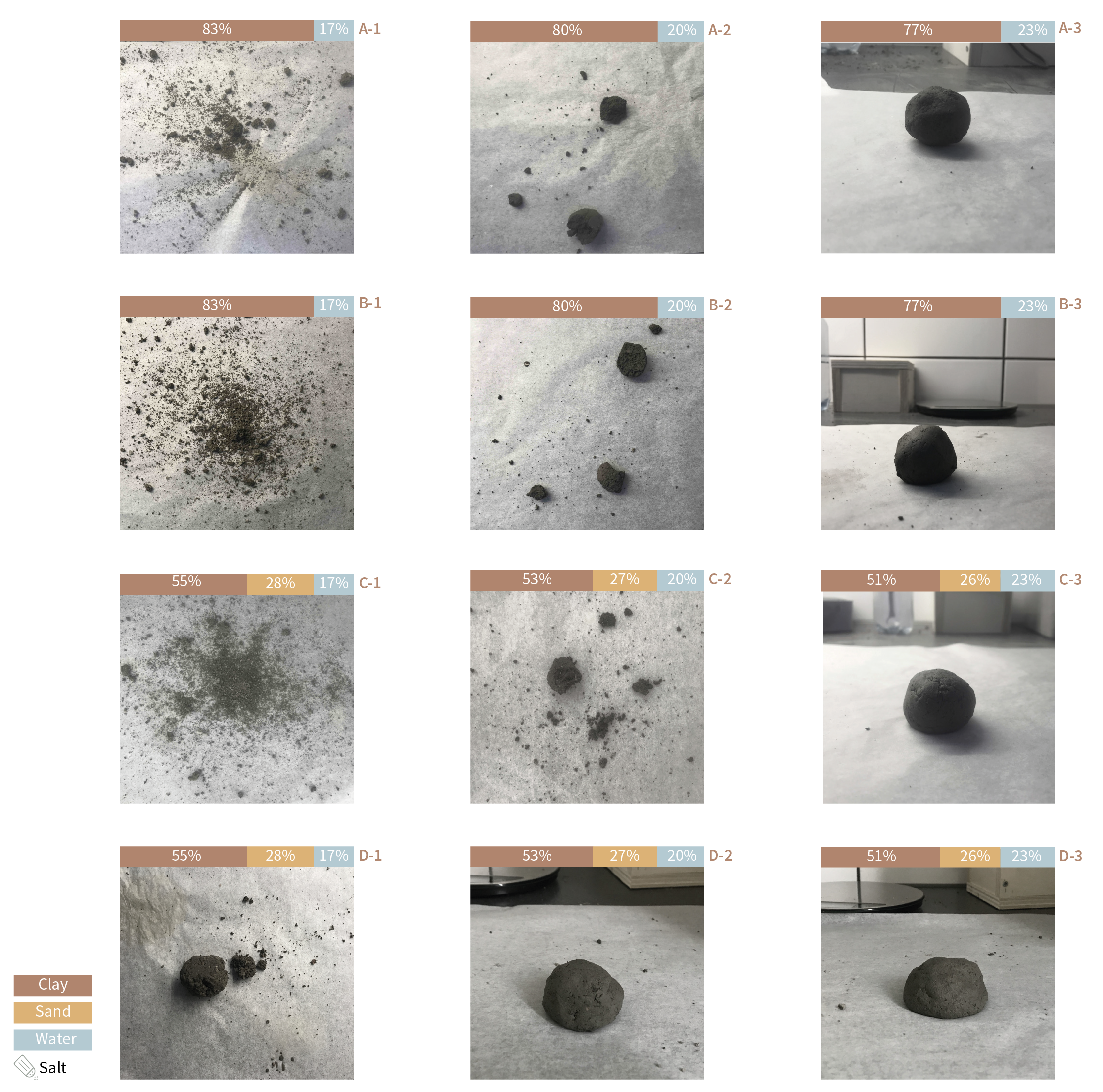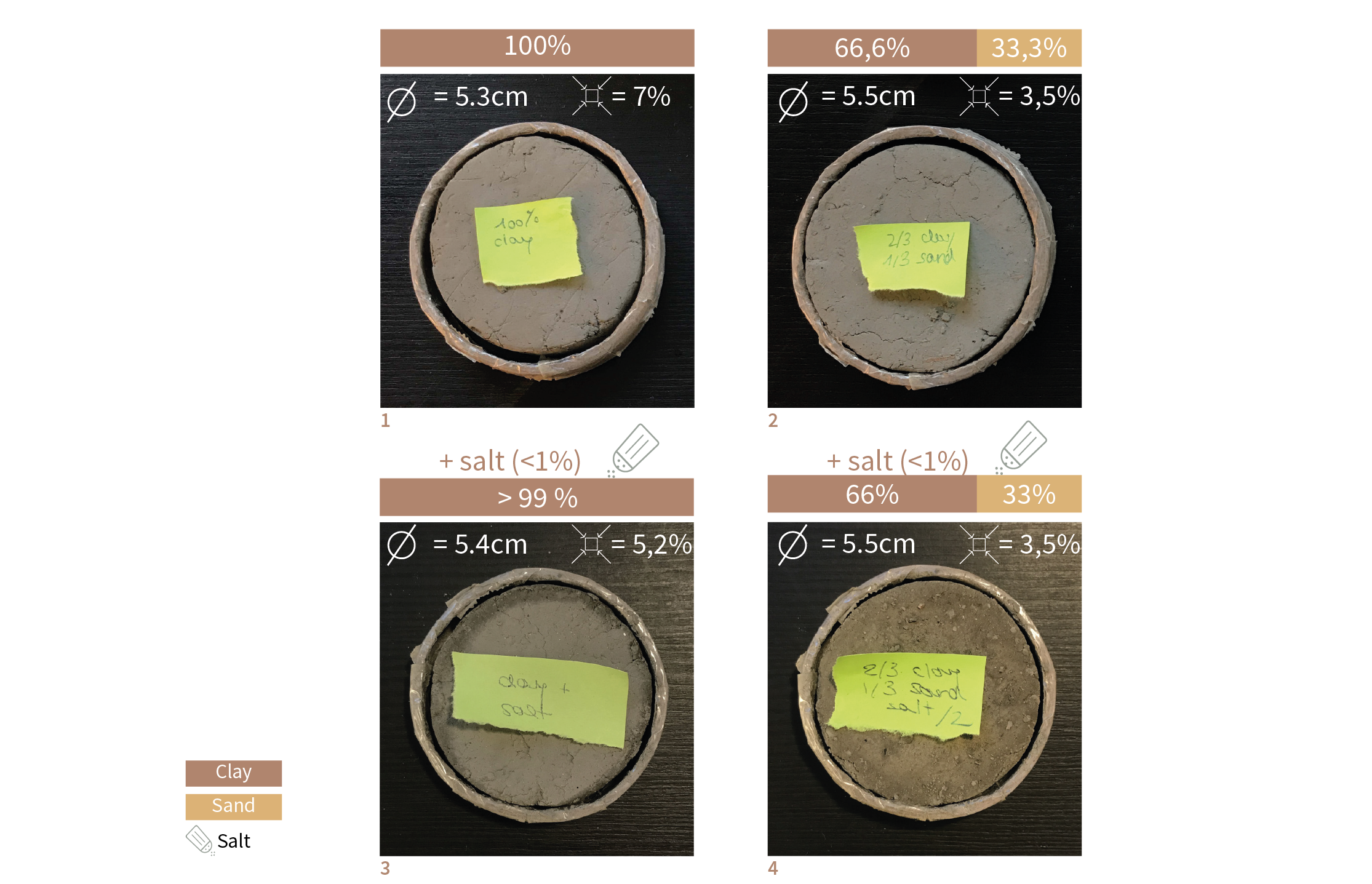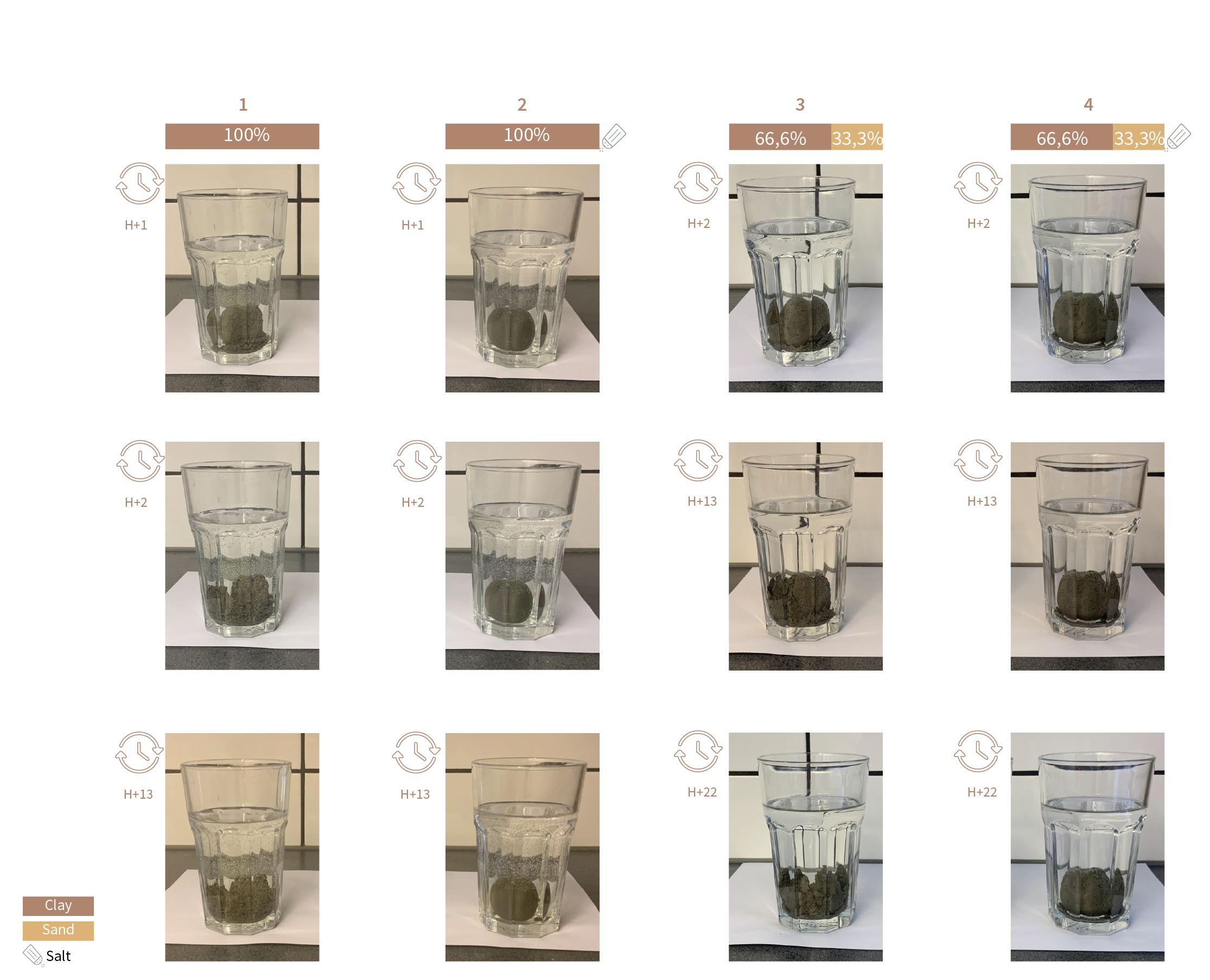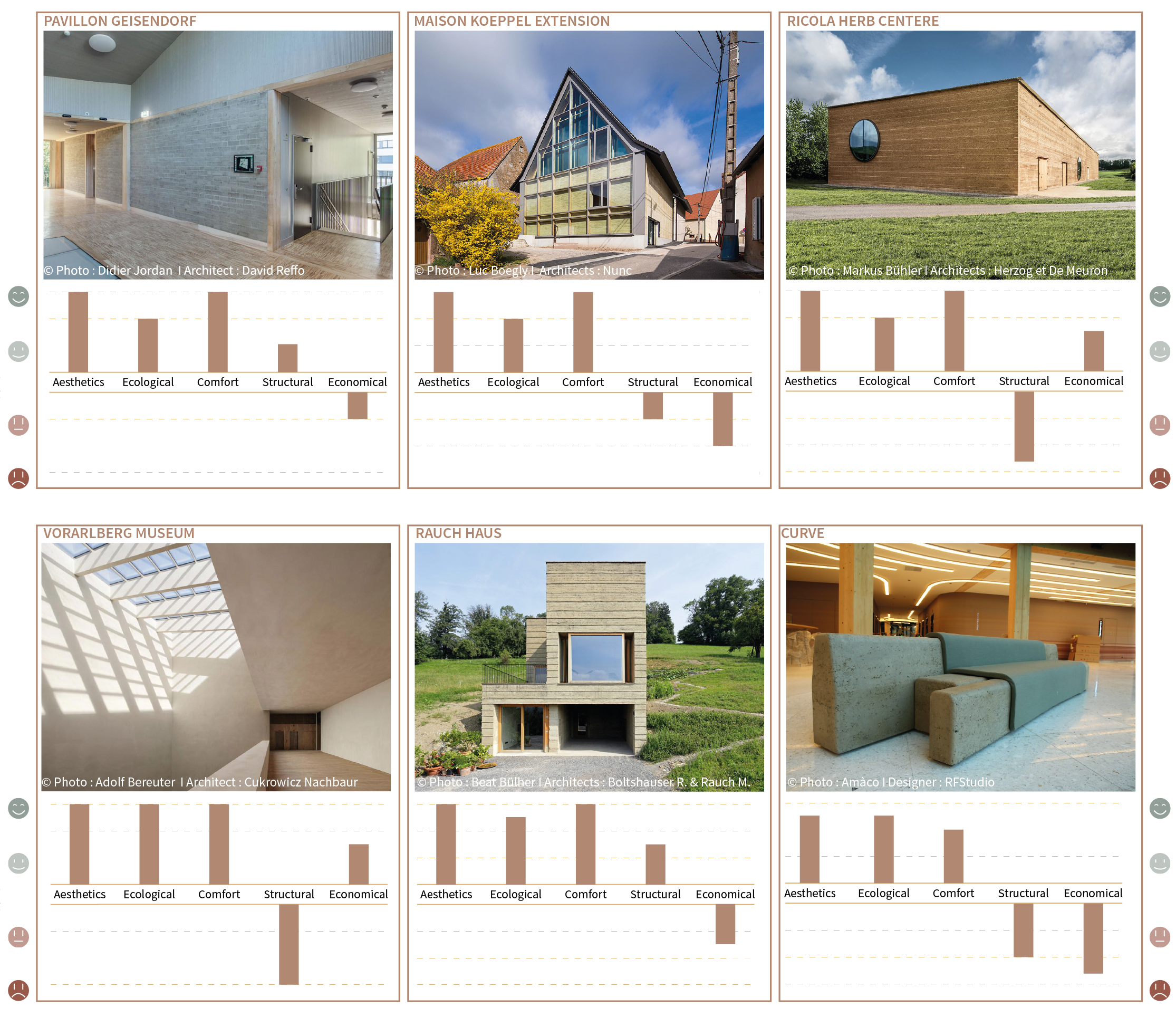Introduction / Clay in theory / Clay in practice / Catalog / Generic design / Reflections
3
CLAY IN PRACTICE
Field tests
During the research process, field tests were carried out to know the local material and better understand it. The studied clay comes from the Marieholmstunneln, under the Göta älv. Construction with reused clay requires studying several properties of the material such as the composition, shrinkage, or cohesion of the material in different situations.
LOAM COMPOSITION
The very first approach here consists of analyzing the composition of the earth. Picture 1 below reveals that it is a very thin loam, without large aggregate like gravel but only sand, silt, and clay. The shiny texture of the cutting ball (Picture 2) reveals a high clay content, and according to the Jar test (Picture 3), the composition is more or less 36% of clay, this soil is in a “clay loam” according to the earth characterization diagram.

BALL DROP
Here a plastic clay sample was formed in a ball and drop from 1.5m. Different results show different cohesive properties of clay depending on the water content and composition. A ball with no cracks has a high bond strength and often needs to be mixed with sand (to reduce shrinkage), such as the ball in A-3 picture. In that case, it needs the addition of extra sand, this was done in sample C. The picture C-3 shows that with the same amount of water the ball is smothered and it is better.

SHRINKAGE TEST
A test to evaluate the shrinkage was performed.
The diameter of the casting in which the samples were formed was 5.7 cm. The shrinkage rate with extracted pure earth is quite high, due to the high clay content and low amount of sand, so the same test was realized with an extra addition of sand and salt. According to the result, adding sand halves the shrinkage rate. On the other hand, it also reduces the cohesion of the sample, so care must be taken to make a mixture that answers the need according to what is the most important.

BALL DROP IN WATER
This test aims to see the cohesive strength when the clay is in contact with water. The results show that clay alone collapses after just two hours. However, adding salt increases resistance for up to thirteen hours in the water, which gives an indication that salt can be used to create a clay material resistant to water. The sand also enhances the resistance of loam in the water.

CASE STUDIES
To continue the discovery of the benefits of earth, several earthen buildings have been chosen for the different properties they highlight.
For each project, a suggestive evaluation was carried out based on the literature and interviews. This evaluation is based on different aspects of the material, those aspects are not all directly related to the indoor climate but are all important to be considered for the promotion of the material. This analysis makes it possible to compare the different advantages of earth on the indoor climate.
In each project, the earth was chosen for its ability to improve a characteristic of the indoor climate, for example, CEB was chosen in Geisendorf for the thermal mass it provides to a wooden construction, while the clay plaster in the Vorarlberg Museum to keep the relative humidity constant.
Measurements in the Koeppel extension and the Rauch house confirmed its impact on temperature and humidity regulation.
No measurements are made on the acoustic, but earth rooms are always describe as cozy and felted.
Finally, one of the main drawbacks highlighted by the case studies is that earthen construction is expensive in high-wage countries because it is very labor-intensive. However, the prefabrication, used in the Ricola factory, is more and more widespread and allows to reduce costs.
Another point was also highlighted in this analysis: Is it relevant to use clay for load-bearing structure? Perhaps this is not so resource-saving since it needs a greater amount of material to be load-bearing and must adapt to a lack of standards.

